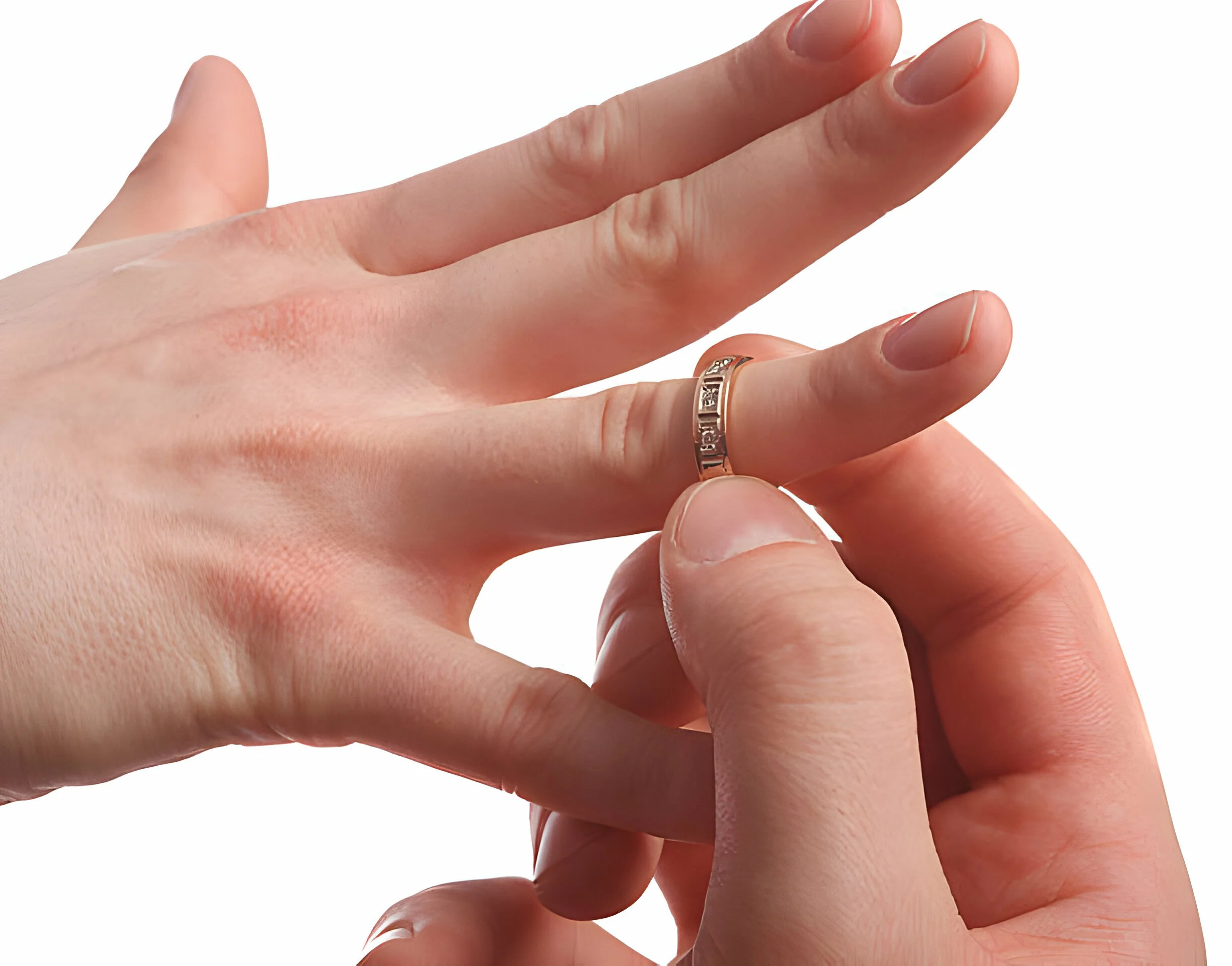Dermaplaning is one of my favorite beauty routines. It’s a simple and effective way to exfoliate my skin and get rid of unwanted peach fuzz. Unlike the salon version, which can be pricey and time-consuming, I prefer to do it myself at home. It’s easy, satisfying, and convenient for my busy schedule.
Dermaplaning involves using a blade to gently scrape off the dead skin cells, dirt, and hair from the surface of the skin. According to dermatologist Azadeh Shirazi, MD, this makes the skin look smoother, brighter, and more even. It also helps the skin breathe better and absorb skincare products more deeply. And it makes makeup application a breeze.
If you’re curious about dermaplaning, I highly recommend giving it a try. You’ll be amazed by the results. Just make sure you use a clean and sharp blade, and follow the instructions carefully. Your skin will thank you.
Our Top Picks
| Image | Product | Feature | Price |
|---|---|---|---|
|
Best Overall
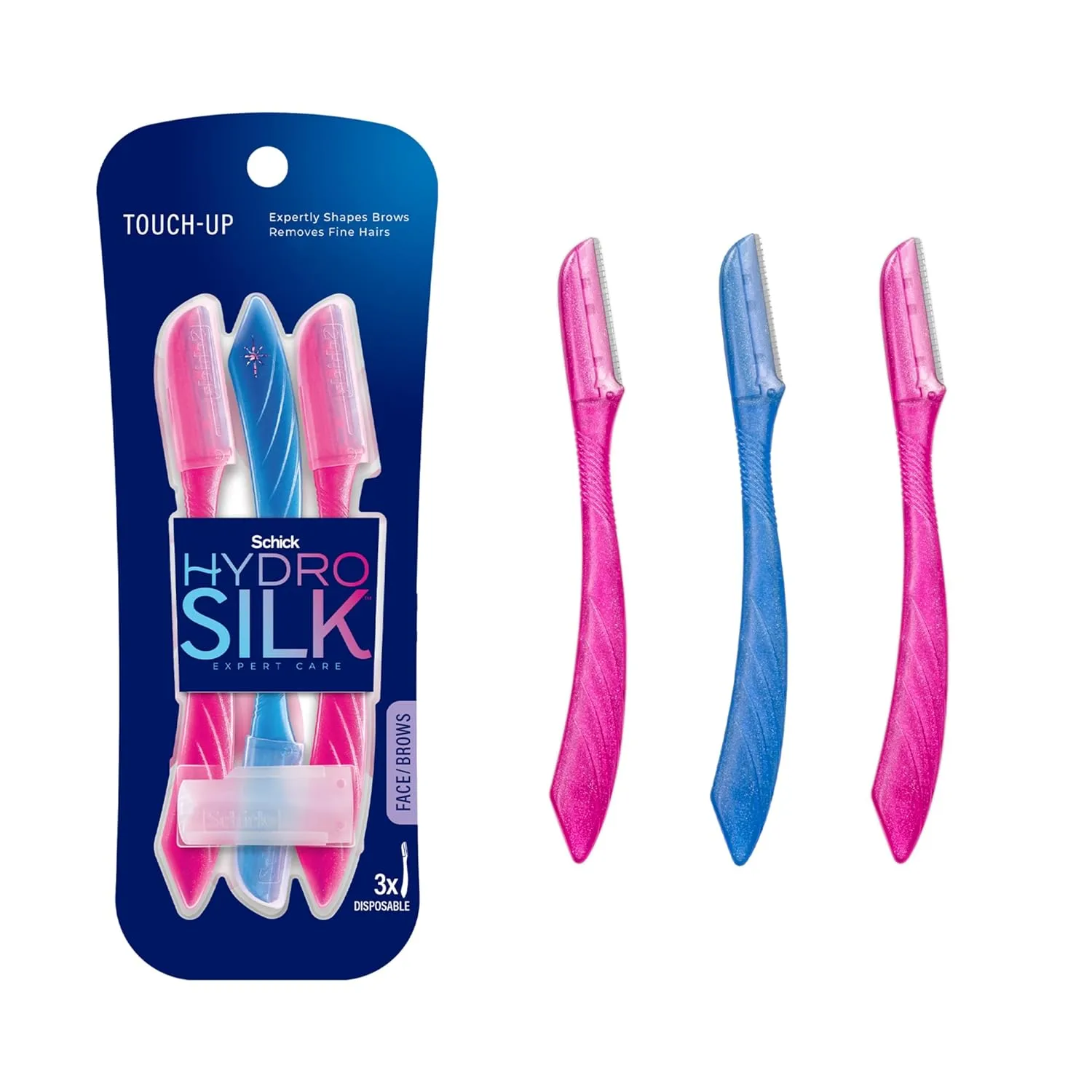
|
Schick Hydro Silk Touch-Up Dermaplaning Razor Tool
|
|
Check Price |
|
Best Splurge
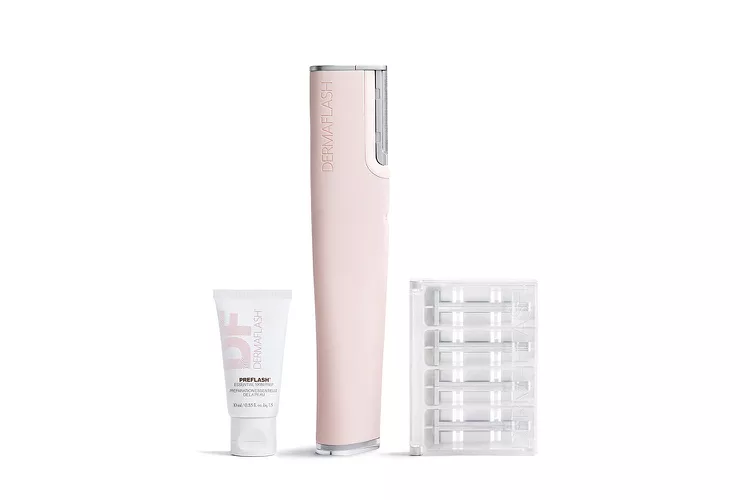
|
Dermaflash Luxe+ Dermaplaning Kit
|
|
Check Price |
|
Best Reuseable
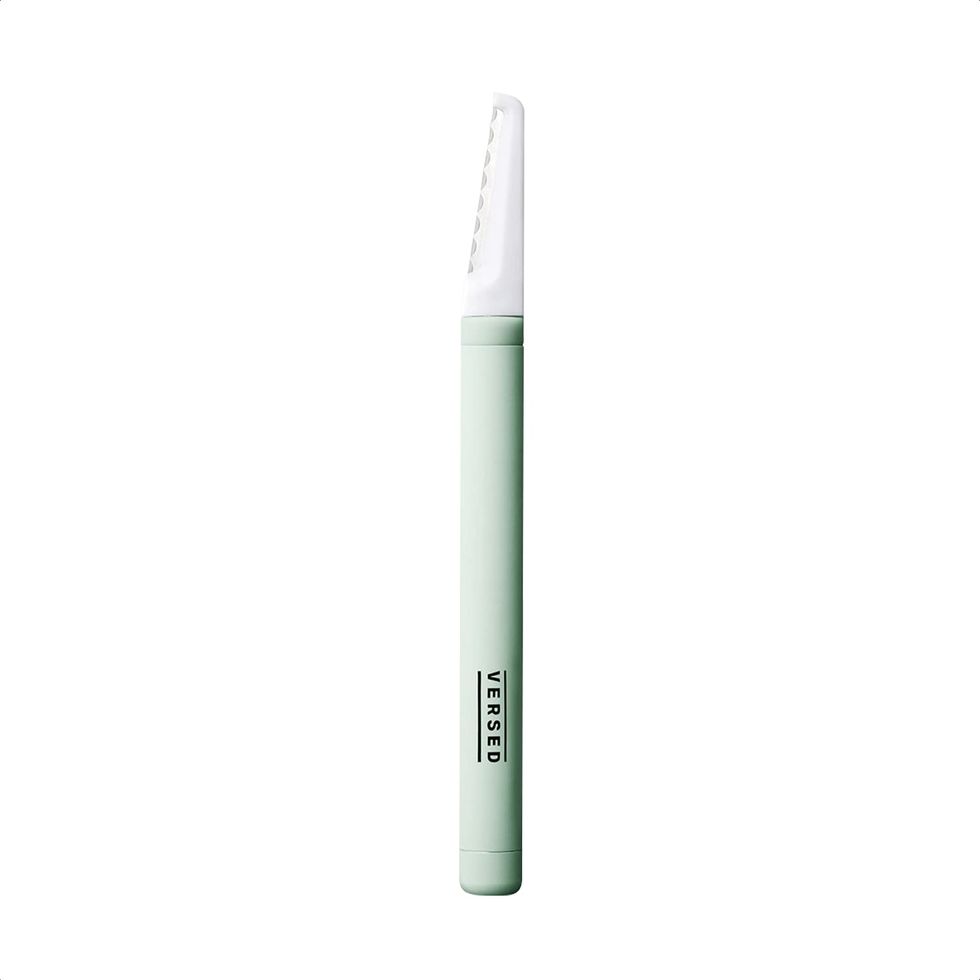
|
Versed Instant Gratification Dermaplaning Tool
|
|
Check Price |
|
Best for Experts
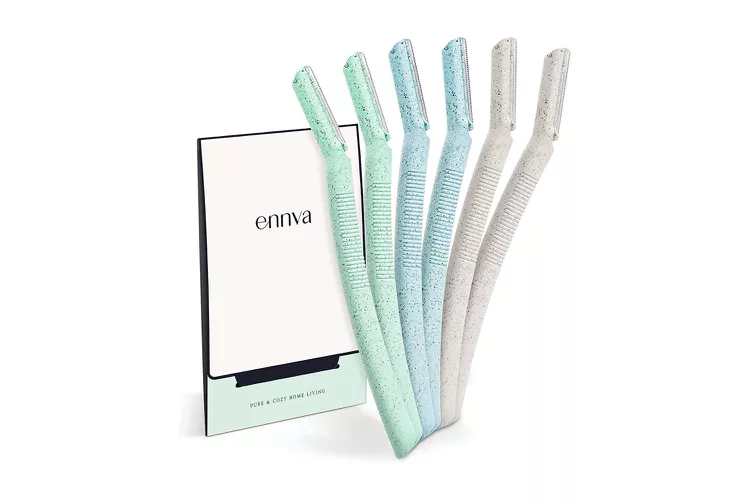
|
Ennva Dermaplane Facial Razor
|
|
Check Price |
1. Schick Hydro Silk Touch-Up Dermaplaning Razor Tool
I bought the Schick Hydro Silk Touch-Up Dermaplaning Razor Tool after seeing some positive reviews on Amazon. I was looking for a simple and effective way to remove unwanted facial hair and exfoliate my skin. I have to say, I am very impressed with this product!
The razor is very easy to use and comes with a precision cover that helps to shape the eyebrows and avoid cuts. The blade is sharp enough to remove the peach fuzz and dead skin cells, but not too harsh on the skin. It leaves my face feeling smooth and soft, and it also helps to improve the application of makeup and skincare products.
I use the razor once a week, and I have noticed a difference in my skin texture and appearance. I have not experienced any irritation, redness, or ingrown hairs from using this product. It is also very affordable and comes in a pack of three, so I can replace them often and keep them clean.
I would highly recommend the Schick Hydro Silk Touch-Up Dermaplaning Razor Tool to anyone who wants to achieve a flawless and radiant complexion. It is a great addition to my beauty routine and I am very happy with the results.
2. Dermaflash Luxe+ Dermaplaning Kit
If you want to pamper your skin with a spa-like treatment, you might want to try the Dermaflash Luxe Device. This device comes with a pre-treatment cleanser and a post-treatment moisturizer to nourish your skin before and after the session.
The device itself uses a unique sonic technology that vibrates rapidly to remove peach fuzz and dead skin cells from your face. It has a “Microfine Edge” that prevents any cuts or irritation on your skin.
Our testers were impressed by how this device made their skin feel softer and smoother than ever. One tester said they liked the thick and comfortable grip of the device, while another tester said their skin was glowing despite some minor redness.
The only downside of this device is the high price and the need to replace the blades regularly. However, one tester admitted that this device was worth every penny because it performed better than any other device they had tried before.
Blade Material: Stainless Steel | Safety Features: Blade is hidden when not in use | Uses: Eliminates peach fuzz, exfoliates skin, improves skin texture | Replacement Blades Included: Yes
3. Versed Instant Gratification Dermaplaning Tool
This tool is designed for self-use, which is why Dr. Shirazi approves of it. She explains that the weighted round handle makes it easy and safe to dermaplane yourself, as it gives you more control over the single edge, stainless steel blades. These blades offer the most effective exfoliation treatment you can get at home.
Another benefit of this tool is that you can reuse the handle and just buy new blades when needed. The brand claims that each blade can last for up to four uses, so you are getting a good value for your money.
The device should be used every one to three weeks, depending on your skin type and needs. However, you should not use it with other exfoliation methods like scrubs and peels, as that could irritate your skin. After dermaplaning, you can hydrate your skin with Versed’s Moisture Maker Hyaluronic Serum.
One user, who tried this tool for the first time, was impressed by how easy and gentle it was on her sensitive skin. She says, “I had never used a blade on my face before, but this tool made me love it. I’m going to keep using it and see how it improves my skin.”
4. Ennva Dermaplane Facial Razor
This razor is designed for dermaplaning experts who can handle its sharp and angled blade. It works best for shaping eyebrows and removing unwanted hair from small areas like the chin or upper lip.
The razor’s base is biodegradable, so you can easily separate it from the blade and recycle most of the tool. Each set comes with six razors, so you won’t run out of them anytime soon.
Our tester was impressed by the razor’s performance, and said it eliminated all the peach fuzz and hair, despite causing some redness on their jawline.
Blade Material: Stainless Steel | Safety Features: Protective cover, anti-slip grip | Uses: Exfoliation, hair removal | Replacement Blades Included: No
Understanding Dermaplaning Tools
Skin Concerns
If you have sensitive, acne-prone, or rosacea-prone skin, dermaplaning might not be the best choice for you. According to Dr. Rachel Nazarian, it’s essential to avoid areas with active inflammation if you have acne or rosacea. Additionally, always moisturize after dermaplaning to keep your skin healthy and strong, as the blade can irritate sensitive skin.
Over-Exfoliation
Dermaplaning is an exfoliation method, so avoid additional exfoliation before or after the treatment. Dr. Marissa Perman advises pausing your routine use of acidic or exfoliating skincare products before your dermaplaning session. Post-treatment, be cautious with the products you apply since your skin will absorb them more efficiently.
Grip
Since you’re working with a sharp blade, having a tool with a solid grip is crucial for steady handling. Look for materials like plastic and silicone, which provide better grip, and tools with a thicker base to hold securely as you glide it across your skin.
Durable Blades
Opt for a dermaplaning tool with a surgical-grade stainless steel blade. This type of blade is easy to clean, resistant to rust, and more hygienic than other metals. Its durability means you won’t have to replace it frequently, providing long-lasting use.
Safety
Regardless of your experience level, safety is paramount when using a dermaplaning tool. Beginners might prefer tools with a wider base or concealed blades to minimize the risk of injury. Experienced users might opt for thinner or more exposed blades for precise removal of fine hairs.
What to Look for in a Dermaplaning Tool
Stainless Steel Blade
Dr. Skotnicki recommends choosing a tool with a stainless steel blade. This material is not only hygienic and long-lasting but also rust-resistant after cleaning. Stainless steel is believed to help reduce inflammation, making it ideal for facial tools.
Good Grip
Dermaplaning involves sliding a sharp blade across your face, so a tool with a good grip is essential. A secure grip reduces the risk of the tool slipping, preventing potential nicks or cuts.
Reusable Handles
For sustainability and cost-effectiveness, Dr. Skotnicki suggests tools with reusable handles and replaceable blades. This approach generates less waste and saves money over time since you only need to replace the blades when they dull. However, ensure you replace blades as needed to avoid using a blunt razor, which can cause nicks and irritation.
What to Keep in Mind When Using Dermaplaning Tools
Ease of Use
At-home dermaplaning tools are popular because they make expensive in-office treatments more accessible. However, ease of use is crucial to avoid nicks, cuts, breakouts, and irritation. Consider the sharpness of the blade, handle manageability, and the clarity of the instructions when choosing a tool.
Replacement Blades
For dermaplaning tools to work effectively and deliver smooth, glowing skin, the blades need to be sharp and free of bacteria. Worden advises using one-time blades and never reusing them to prevent dullness and bacterial buildup. Always have replacement blades on hand to ensure your tool remains effective and safe.
Skin Condition
Before using a dermaplaning tool, evaluate your skin condition. Celebrity aesthetician Joshua Ross and dermatologist Dr. Michelle Henry both caution against dermaplaning if you have active breakouts, open wounds, or highly sensitive skin.
Dermaplaning can spread bacteria from acne or worsen conditions like rosacea, psoriasis, eczema, and hives. Dr. Azadeh Shirazi also recommends healing dry or flaking skin before attempting dermaplaning.
Is Dermaplaning Safe for Everyone?
Dermaplaning is generally safe, but those with sensitive or acne-prone skin should be cautious. Dr. Azadeh Shirazi emphasizes the need for a strong skin barrier to tolerate the treatment. If you have skin conditions that could flare up with exfoliation, consult your dermatologist before trying dermaplaning.
Is it Safe to Dermaplane at Home?
According to experts, true dermaplaning with a surgical blade should be left to professionals due to the expertise required. If you choose to dermaplane at home, select a high-quality tool with guards rather than an exposed blade. Always use a new blade each time to ensure cleanliness and sharpness.
For those hesitant to try dermaplaning, alternatives like gentle exfoliating scrubs, peels, or chemical exfoliants (such as glycolic or salicylic acid) can also help smooth the skin, though they might not offer the same level of exfoliation.
How to Try Dermaplaning at Home
Want to give dermaplaning a go from the comfort of your own home? Follow these tips to ensure you do it safely and effectively.
Start with Clean Skin
Begin by washing your face with your favorite cleanser and drying it completely. Dr. Shirazi also recommends cleaning your hands, the tool you’ll use (if it’s not new), and the area where you’ll be performing the dermaplaning. Cleanliness is key to avoid infections and ensure smooth results.
Work in Sections
When using the dermaplaning tool, start by dividing your face into sections. Pull the skin taut in the area you plan to treat. This helps the razor glide more easily over your skin, reducing the risk of nicks and irritation.
Use Small Strokes
Move the blade over the taut skin in short, downward strokes. Hold the blade at a slight angle to achieve the smoothest shave. Small, controlled movements ensure better exfoliation and minimize the chance of cuts.
Rinse Off
After dermaplaning your entire face, avoid any irritated areas or bumps. Wash your face again with a gentle cleanser to remove any remaining debris. This step ensures that your skin is clean and ready for moisturizing.
Frequently Asked Questions (FAQs)
How do you use a dermaplaning tool at home?
When dermaplaning at home, always start with a clean, sterilized blade and a clean face. Hold the skin taut, keep the blade at an angle, and use short, downward strokes to remove hair and dead skin cells, applying light pressure.
Is dermaplaning safe for acne-prone skin?
Dermaplaning is not recommended for acne-prone skin. Founders of The Clinic, Kaye Scott and Lisa Sullivan-Smith, warn that slight nicks can occur, and overuse can lead to irritation. Avoid dermaplaning if your skin is broken, sensitive, or prone to cysts and whiteheads.
How often should you use a dermaplaning tool?
Because dermaplaning removes actual skin layers, it should only be done once a month. Overuse can irritate the skin, as noted by Skotnicki.
Does hair grow back thicker after dermaplaning?
No, this is a myth. Dermaplaning does not affect the thickness or color of your hair. Initially, new hair growth might feel “thicker” because it is fresh and not yet worn down, but this sensation is temporary.
How do you prepare your face for dermaplaning?
Dermaplaning should be done on a freshly cleansed, dry face. Avoid applying oils or gels, as they can interfere with the tool’s exfoliation ability.
What should you avoid doing after dermaplaning?
After dermaplaning, avoid direct sun exposure, extreme heat, scrubs or exfoliants, and chlorine from swimming pools, as these can all irritate the freshly exfoliated skin.
Is dermaplaning different from shaving?
Yes, dermaplaning is a combination of shaving and exfoliating. It removes both the soft vellus hairs on your face and dead skin cells, improving the texture of your skin.
What angle is best for dermaplaning?
The best angle for dermaplaning is a 45-degree angle, which allows the blade to glide smoothly and effectively remove hair and dead skin cells.






